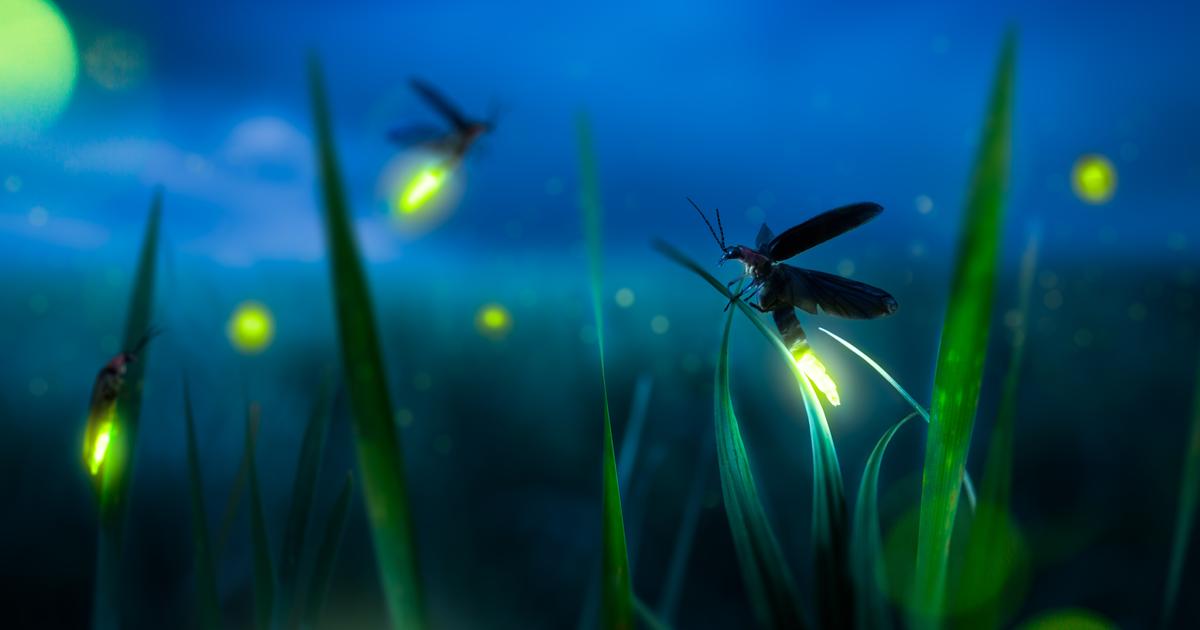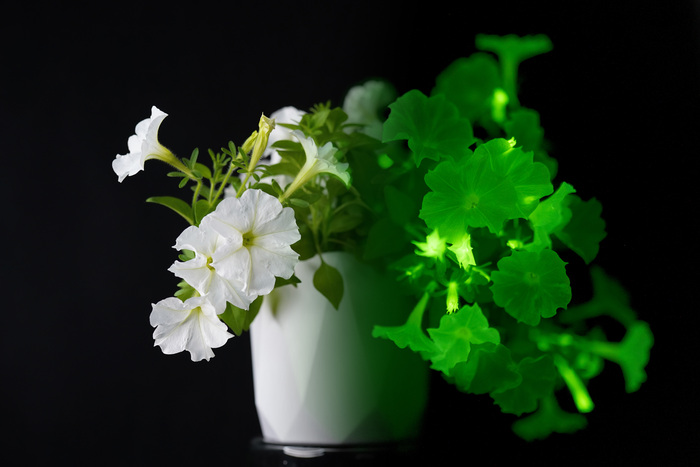Did you like
Avatar
?
Did you know that James Cameron was greatly inspired by the beauty of nature?
There are indeed many
bioluminescent animals
, which means that they produce their own light.
This chemical phenomenon should not be confused with phosphorescence (ability to continue to emit light after being illuminated) or with fluorescence (light emission due to the excitation of electrons).
To discover
March: what vegetables and fruits are in season?
Bioluminescent organisms are found in the ocean, where they represent 76% of the fauna according to researchers Séverine Martini and Steven Haddock.
Bioluminescence is used for hunting, communication, attracting a sexual partner or camouflage.
It is therefore not thought for the pleasure of the human eyes;
but who cares: let's enjoy these spooky animals!
A jellyfish
The jellyfish.
Adobe Stock
The ballet of luminous
jellyfish
is remarkable to observe.
Several species use this natural power to hunt:
aequorea victoria
(the crystal jellyfish),
aurelia aurita
(the moon jellyfish),
periphylla periphylla
(helmeted jellyfish) or the
atolla reynoldsi
, officially recognized in 2022 in California.
Jellyfish have the particularity of not having a brain.
But proof that they are not lacking, they have existed for more than 600 million years and have survived all mass extinctions.
Another exceptional characteristic, the jellyfish is composed of 98% water (and 2% dry matter).
They can sting their prey with hundreds of nematocysts, but most of them cannot kill humans.
Read alsoVendée: physalies, “jellyfish” that can cause serious burns, wash up on beaches
The glow worm
A glowworm.
Adobe Stock
The
glowworm
, like the firefly, is a member of the family Lampyridae.
France has 11 species of glowworms, which can be found in all regions.
Their fluorescent green light, emitted by the females only at the level of their posterior segment, makes it possible to attract the males during the summer nights (June and July especially) for the purpose of reproduction.
Glowworm larvae are great predators.
They attack snails and slugs, sometimes other small insects.
Adult worms hardly feed and live on their reserves.
They let themselves die after reproduction.
Read alsoCamouflage: this fish can see with its skin
Arachnocampa luminosa larvae
Arachnocampa luminosa larvae.
Adobe Stock
You will never see flies the same way again.
Or in any case, a species of fly in particular, from the family of keroplatids, called “
arachnocampa luminosa
”.
The larvae of this fly native to New Zealand are indeed bioluminescent, which helps them to catch prey.
The larvae feed mainly on other Diptera, attracted by beads of adhesive mucus.
This insect is very present in a New Zealand cave south of Auckland, called Waitomo.
We can thus see the nests built by the larvae, bluish silk filaments impregnated with an acid paralyzing poison.
At the end of the metamorphosis, before hatching, the female shines even more, in order to attract the males.
The Maoris gave it the name "titiwai", which means "reflection on water".
Read alsoBiomimicry: how nature inspires technology
firefly
The firefly.
Adobe Stock
Like 300 other bioluminescent animals, the
firefly
has a protein called “luciferin” (from the Latin
lucifer
, “light bearer”).
This small insect should not be confused with the glowworm;
their main difference is that the firefly can only emit light intermittently.
Moreover, it is very rare to find them in France, where only one species has established itself, near Nice and in Corsica (against 11 for the glowworm).
Fireflies are on the decline in France, in particular because of pesticides, but also public lighting, which disorients males.
Read alsoBiodiversity: the silent decline of butterflies in France
Mnemiopsis leidyi
Mnemiopsis leidyi.
Adobe Stock
The
mnemiopsis leidyi
is a ctenophore, that is to say an invertebrate, carnivorous and transparent marine organism.
It is likened to plankton, this living group that lets itself be carried by the sea current.
Unlike its cousins the jellyfish, the mnemiopsis cannot sting, but it can stick prey in order to capture it.
To repel predators, it has tealights that create a rainbow of colors.
It is found in coastal and shallow waters of the North Atlantic.
He is originally from Cape Cod, Massachusetts.
But we can now see them in the Mediterranean, the North Sea, or the Black Sea.
This species can quickly become invasive and harm the ecosystem.









